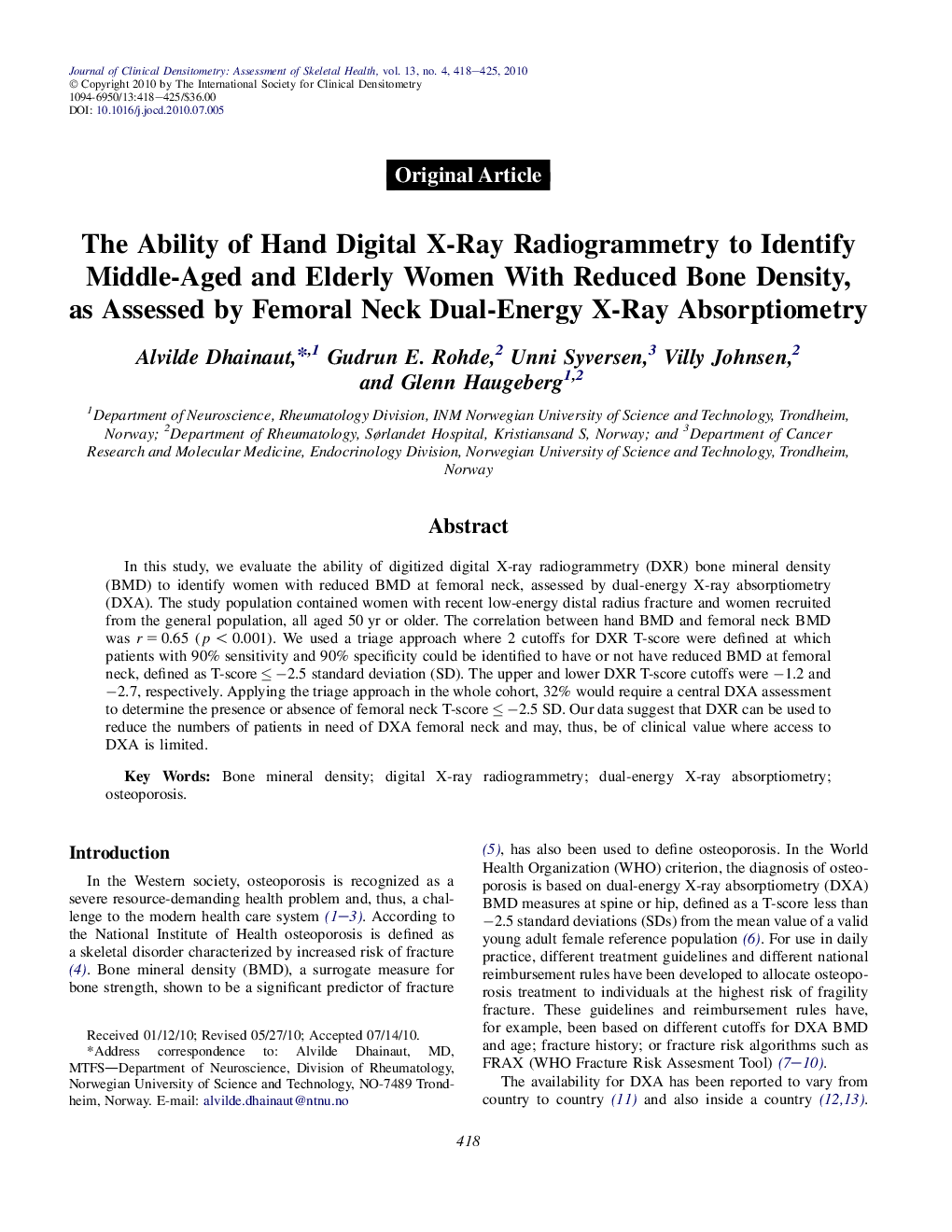| کد مقاله | کد نشریه | سال انتشار | مقاله انگلیسی | نسخه تمام متن |
|---|---|---|---|---|
| 3271085 | 1208259 | 2010 | 8 صفحه PDF | دانلود رایگان |
عنوان انگلیسی مقاله ISI
The Ability of Hand Digital X-Ray Radiogrammetry to Identify Middle-Aged and Elderly Women With Reduced Bone Density, as Assessed by Femoral Neck Dual-Energy X-Ray Absorptiometry
دانلود مقاله + سفارش ترجمه
دانلود مقاله ISI انگلیسی
رایگان برای ایرانیان
کلمات کلیدی
موضوعات مرتبط
علوم پزشکی و سلامت
پزشکی و دندانپزشکی
غدد درون ریز، دیابت و متابولیسم
پیش نمایش صفحه اول مقاله

چکیده انگلیسی
In this study, we evaluate the ability of digitized digital X-ray radiogrammetry (DXR) bone mineral density (BMD) to identify women with reduced BMD at femoral neck, assessed by dual-energy X-ray absorptiometry (DXA). The study population contained women with recent low-energy distal radius fracture and women recruited from the general population, all aged 50 yr or older. The correlation between hand BMD and femoral neck BMD was r = 0.65 (p < 0.001). We used a triage approach where 2 cutoffs for DXR T-score were defined at which patients with 90% sensitivity and 90% specificity could be identified to have or not have reduced BMD at femoral neck, defined as T-score â¤Â â2.5 standard deviation (SD). The upper and lower DXR T-score cutoffs were â1.2 and â2.7, respectively. Applying the triage approach in the whole cohort, 32% would require a central DXA assessment to determine the presence or absence of femoral neck T-score â¤Â â2.5 SD. Our data suggest that DXR can be used to reduce the numbers of patients in need of DXA femoral neck and may, thus, be of clinical value where access to DXA is limited.
ناشر
Database: Elsevier - ScienceDirect (ساینس دایرکت)
Journal: Journal of Clinical Densitometry - Volume 13, Issue 4, October 2010, Pages 418-425
Journal: Journal of Clinical Densitometry - Volume 13, Issue 4, October 2010, Pages 418-425
نویسندگان
Alvilde Dhainaut, Gudrun E. Rohde, Unni Syversen, Villy Johnsen, Glenn Haugeberg,